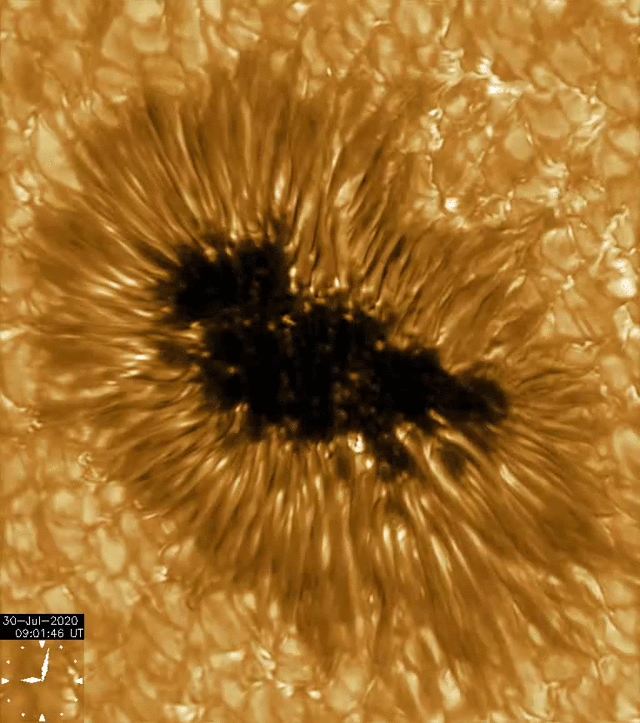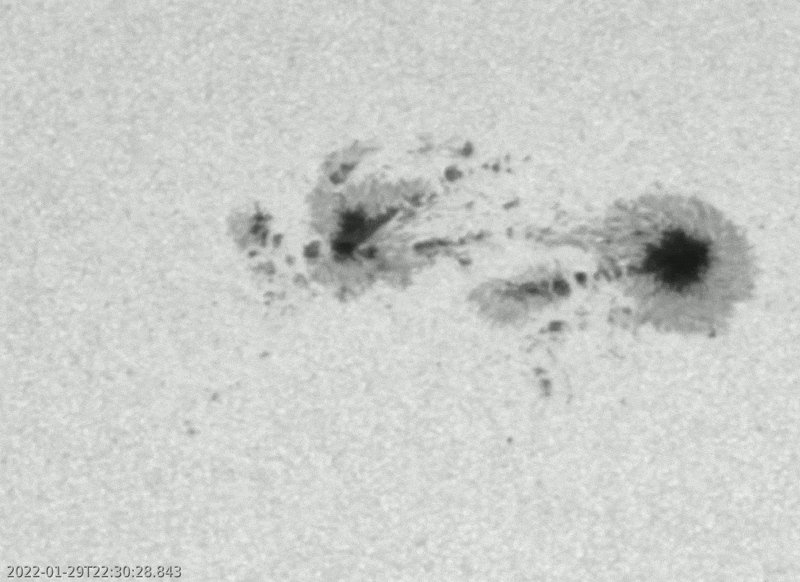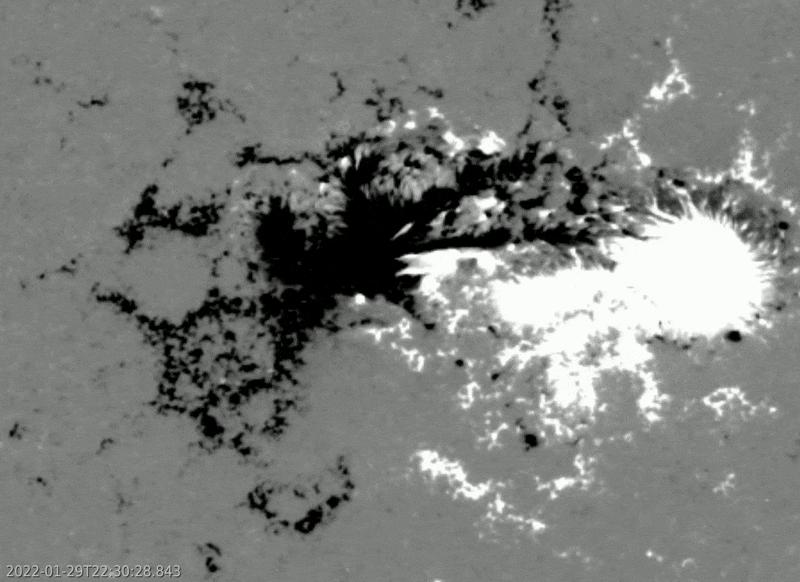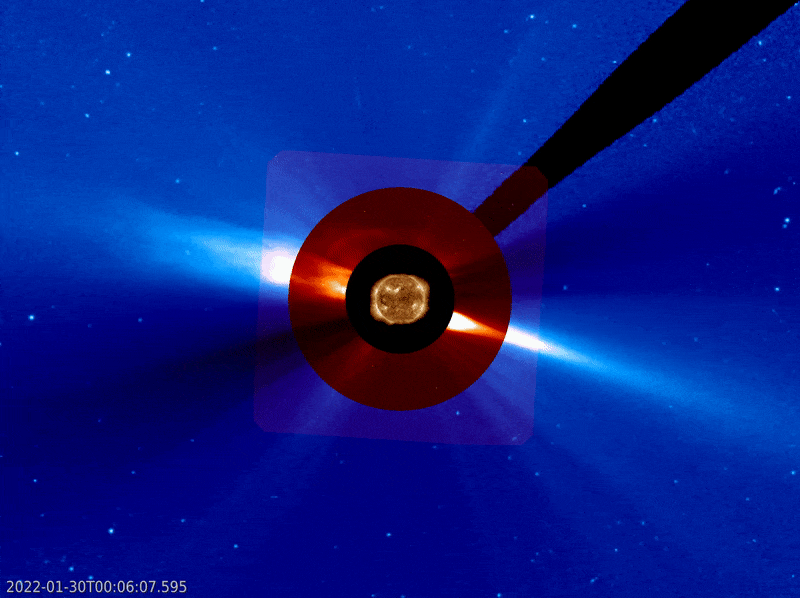Scientists from Skoltech and their colleagues from the University of Graz & the Kanzelhöhe Observatory (Austria), Hvar Observatory (Croatia), and the Belgian Solar-Terrestrial Centre of Excellence – SILSO, Royal Observatory of Belgium presented a new method to predict the strength of the 11-year solar cycle. The results are highly important for anticipating and mitigating space weather effects on astronauts, pilots and modern technological systems both in space and on Earth. The study came out in the Astronomy & Astrophysics journal.
The Sun is our superstar, continuously providing our planet with energy, light, and heat, thus making it a very habitable environment for life. However, it is also the source of powerful explosions, which can affect astronauts and modern technologies in space and on Earth. At the beginning of the 17th century, Galileo Galilei dared to direct his telescope to the Sun and discovered sunspots there! In the 19th century, it became clear that sunspots appear and disappear with a certain periodicity, on average, every 11 years. Sunspots are now regularly monitored by over 80 observatories across the world and currently we have continuous sunspot records for over 4 centuries, which is the longest scientific experiment in the history of humanity.
Sunspots are visual manifestations of powerful magnetic fields that have risen from the solar interior through its surface. The magnetic tubes carrying solar matter emerge from one sunspot, forming a giant loop, entering the surface again through another sunspot. Therefore, most sunspots come in pairs, which, like a magnet, have opposite polarities – one being positive and the other negative. Free magnetic energy accumulates in these loops and can be suddenly released, for example, in the form of a flare, or plasma ejection.
Within just a few minutes, a solar flare can release 100,000 times more energy than all the power plants on Earth generate throughout a year. The light from the flare reaches the Earth within 8 minutes, and if the Earth did not have an atmosphere, the strong X-ray radiation would be harmful for us. But we are lucky, the dense atmosphere of the Earth absorbs the dangerous radiation of the flare and it protects us. But nevertheless, this takes its toll, radio communication and GPS can be disrupted. For example, in November 2015 in Sweden, airplanes disappeared from radars because of a solar flare. And when the Sun is in a stormy mood, airlines are forced to cancel flights over the poles because there is no radio communication during storms. Often right after a flare, from the solar corona plasma clouds are ejected and hurled into space. Coronal mass ejections, giant billion-ton magnetic plasma bubbles, quickly expand outward from the Sun and can hit the Earth in a matter of days if it accidentally gets in the way. It is how the Sun conveys its mood to our planet – a geomagnetic storm rages, and the Aurora Borealis starts its fire dance.
“Currently we entered the rising phase of a new solar cycle (no. 25) and see how more and more sunspots appear on the Sun. More sunspots — more solar storms, flares and coronal mass ejections. Recently, SpaceX launched 49 satellites as a part of Elon Musk’s Starlink internet project. But unfortunately, most of the cubesats were lost and didn’t make it to their envisioned orbit. This failure cost more than US$50 million and was caused by a solar storm. Thus predictions of solar activity are extremely important for planning satellite launches, long-term space missions, prediction of radiation exposures on airplane flights, and many other space weather applications to live in harmony with a stormy mood of the Sun,” says Skoltech associate professor Tatiana Podladchikova, the study’s lead author.
The authors of the recent study in the Astronomy & Astrophysics came up with a new method to predict the strength of the 11-year solar cycle. The team showed that the maximal growth rate of sunspot activity in the ascending phase of a solar cycle is an effective precursor of the amplitude of the solar cycle. Making use of the new catalogue of Hemispheric Sunspot Numbers, recently presented by the team, they showed that the predictions of the solar cycle amplitudes are more accurate when the evolution of solar activity is considered separately for the two hemispheres of the Sun.
“The solar magnetic field is the driver of the 11-year solar cycle and of energetic eruptions from our Sun. We have learned from our study that we can obtain more accurate predictions of solar activity when using hemispheric sunspot data, which capture the asymmetric and out-of-phase behavior of the solar magnetic field evolution in the north and the south solar hemispheres,” says study co-author Astrid Veronig, professor at the University of Graz, and head of the Kanzelhöhe Observatory for Solar and Environmental Research.
Skoltech PhD student and study co-author Shantanu Jain highlighted the practical importance of their new study on solar cycle predictions: “This study allows us to accurately determine the evolution of the solar cycle well ahead of time and prepare ourselves in case of an extreme space weather event. With rising dependence on technology in the 21st century, an extreme space weather event can disrupt our daily life as it can damage the power grids, communications lines and affect the internet causing massive economic losses. However effective and accurate space weather prediction techniques can help us to prevent such scenarios”.
“Our work confirms the high importance of an independent study of Sun’s hemispheres and regular data collection for them. Also worth noting that our method can be used in real time, we can predict the cycle amplitude continuously over the development of the ascending phase of a solar cycle and update the prediction when the latest value of the growth rate is larger than the previous one. With currently available data, we predict that the lower estimate of the amplitude of the current solar cycle (no. 25) will be 110±26, which is comparable with the previous 11-year solar cycle (no. 24),” says study co-author and Skoltech’s MSc graduate Olga Sutyrina, who is currently pursuing her career as a research scientist at Schlumberger.
“Such mid-term predictions can only rest on long past data series retracing the actual evolution of the solar cycle during centuries. Specifically, this work took advantage of the newly re-calibrated sunspot number from WDC-SILSO, combined with hemispheric information retrieved from the Greenwich photographic catalogue. This data combination produced an even richer statistical base for building this new prediction technique,” the study co-author and the head of the World Data Center SILSO Frédéric Clette commented.
“And whatever storms may rage, we wish everyone good weather in space”, concluded Tatiana Podladchikova.
Eruptive solar events on 30 January 2022, that led to the failure of SpaceX Starlink spacecraft.

Transition region/quiet corona in extreme ultraviolet with huge magnetic loops rooted to sunspots in the solar photosphere (SDO/AIA 171Å, 600 000 K)
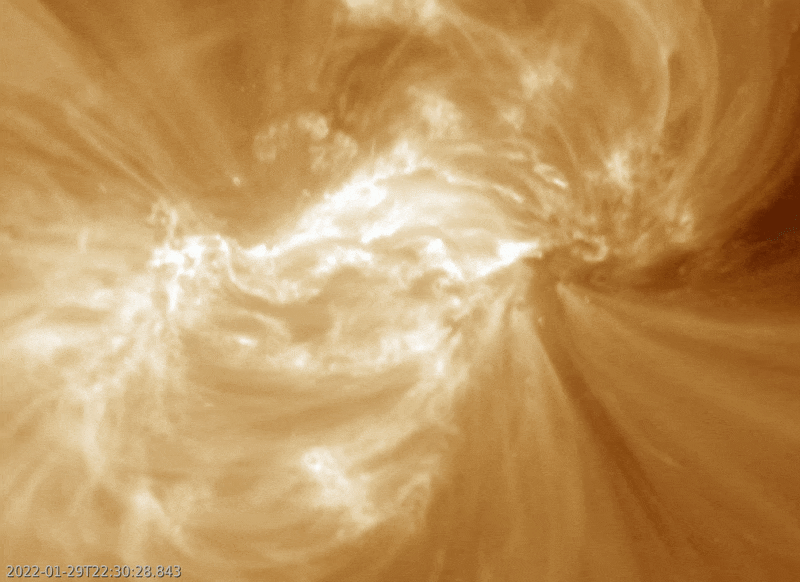
Associated solar flare in the layer of the solar solar corona with a temperature of more than 1 million degrees (SDO/AIA 193Å)

Associated solar flare in the layer of the solar solar corona with a temperature of more than 10 million degrees (SDO/AIA 131Å)
Contact information:
Skoltech Communications
+7 (495) 280 14 81
